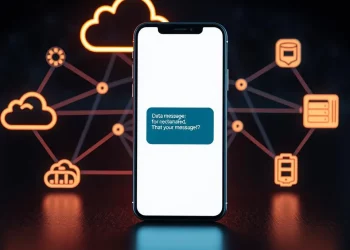In modern communication, Voice over Internet Protocol (VoIP) has transformed how we connect and converse. Alongside voice calls, VoIP technology has paved the way for text messaging through VoIP numbers. But what exactly is a VoIP number, and how does it enable VoIP texting? Let’s explore the world of VoIP texting and understand the concept of VoIP numbers.
What is VoIP Texting?
VoIP texting, often called SMS over VoIP, sends and receives text messages using VoIP technology. Unlike traditional Short Message Service (SMS) that relies on cellular networks, VoIP texting harnesses the power of the internet to transmit messages.
Introducing VoIP Numbers
At the core of VoIP texting is the concept of VoIP numbers. A VoIP, virtual, or internet phone number is associated with a VoIP service provider. Unlike conventional phone numbers tied to specific physical lines, VoIP numbers are linked to internet-enabled devices. This allows users to make both voice and text communications over the internet.
How VoIP Numbers Work
VoIP numbers convert voice and text data into digital packets transmitted over the internet to the recipient’s device. This process, known as packet-switching, ensures that messages are delivered swiftly and efficiently, much like how voice calls are transmitted through VoIP.
Advantages of VoIP Texting
Cost-Effective
VoIP texting is often more cost effective than traditional SMS, especially for international communication. Users can enjoy lower rates, making it an attractive option for businesses and individuals.
Accessibility
VoIP texting enables communication from various internet-enabled devices, including smartphones, tablets, laptops, and desktop computers. This accessibility ensures that messages can be sent and received virtually anywhere with an internet connection.
Integration
VoIP texting seamlessly integrates with other VoIP services, such as voice calls, video conferencing, and file sharing. This integration offers a comprehensive communication solution under one platform.
Flexibility
Geographical limitations don’t bind VoIP numbers. Businesses and individuals can acquire local or toll-free numbers from different locations regardless of their physical presence.
Additional Features: Many VoIP service providers offer additional features with their VoIP numbers, such as call forwarding, voicemail transcription, and integration with business tools.
VoIP Texting in Action
Imagine a scenario where a business wants to send promotional offers to its customers. The business can opt for VoIP texting instead of relying solely on traditional SMS. Using a VoIP number, they can send text messages to a broader audience at a fraction of the cost.
The Evolution of Communication: VoIP Texting
VoIP texting revolutionizes how we communicate and reflects the ongoing evolution of communication technologies. As we delve further into this dynamic realm, let’s explore some additional aspects of VoIP texting:
1. VoIP Numbers for Business: Enhancing Customer Interaction
Small and large businesses are leveraging VoIP texting to enhance customer interaction. By incorporating VoIP numbers into their communication strategy, businesses can offer customers a seamless way to reach out for inquiries, support, or feedback. These virtual numbers can be programmed to forward messages to the appropriate department or team, ensuring swift and efficient responses.
2. VoIP Texting for Remote Work and Collaboration
In the era of remote work and global collaboration, VoIP texting is a valuable tool. Team members across different time zones can communicate effortlessly through VoIP text messages. It promotes real-time interactions and reduces the dependency on traditional email threads, leading to quicker decision-making and enhanced productivity.
3. Integrating Multimedia with VoIP Texting
VoIP texting isn’t limited to plain text messages. It’s also a conduit for sharing multimedia content. Users can exchange images, videos, documents, and location details via VoIP text. This versatility in communication enriches the exchange of information and adds depth to conversations.
4. Security and Encryption
Security is a paramount concern when it comes to communication. VoIP texting addresses this concern by offering encryption features, ensuring that messages are transmitted securely over the internet. This is essential for businesses dealing with sensitive data or individuals prioritizing privacy.
5. Paving the Way for VoIP Evolution
VoIP texting is just one facet of the more significant VoIP revolution. As technology advances, we expect further integration of VoIP services, enhanced features, and increased platform interoperability. VoIP is gradually becoming integral to both personal and professional communication landscapes.
6. Personalization and Branding
VoIP texting also enables businesses to personalize their interactions with customers. By sending branded messages with personalized content, businesses can strengthen their brand identity and create a more engaging customer experience. This level of personalization fosters customer loyalty and contributes to long-term relationships.
In a world where connectivity is paramount, VoIP texting emerges as a dynamic and versatile communication tool. Through VoIP numbers, individuals and businesses alike can harness the power of the internet to send and receive messages, transcending geographical boundaries and time zones.
As this technology advances, we can anticipate even more innovative features and applications enhancing communication. VoIP texting is a testament to the ever-evolving communication landscape, whether for business expansion, remote collaboration, or personal connection. Discover more about text automation.














